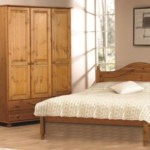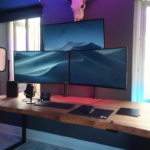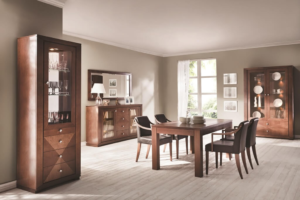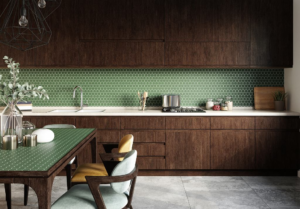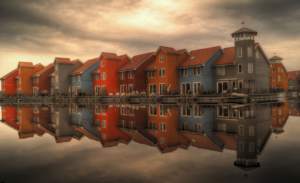10 simple tricks to brighten up a dark interior
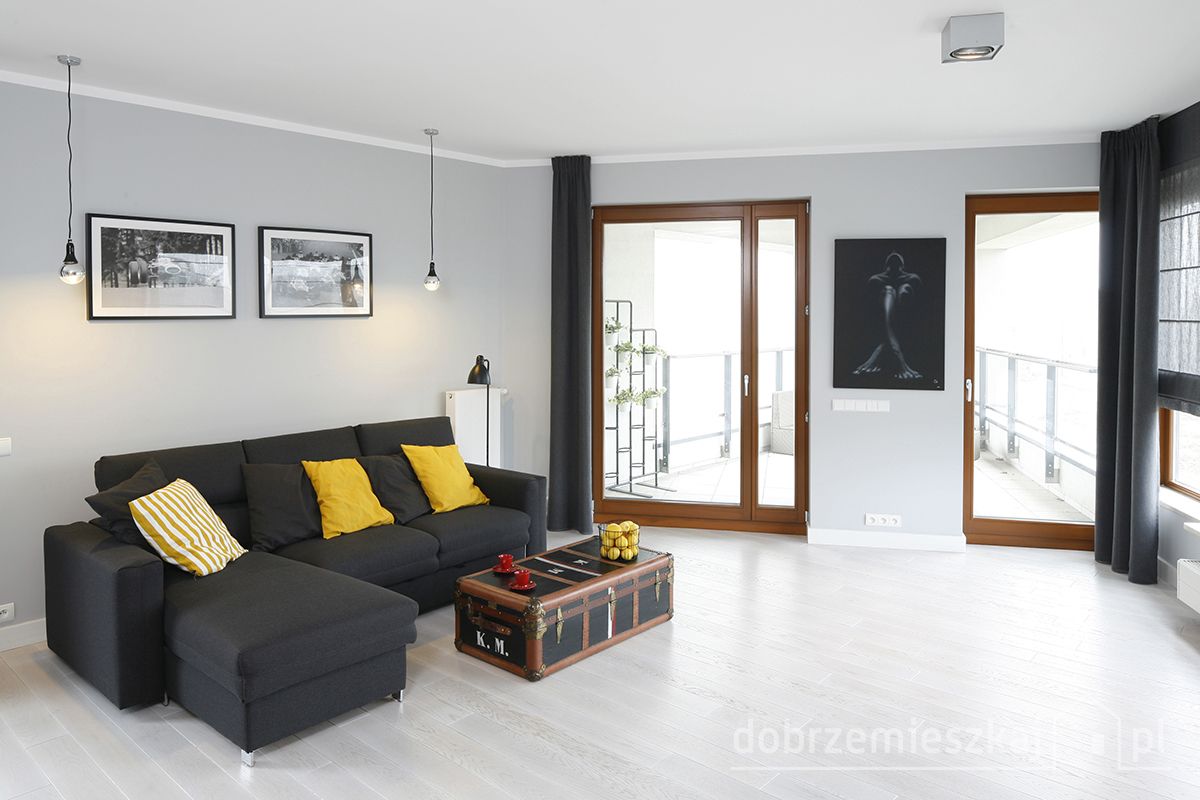
Most of us live in accommodation that wasn’t designed with us in mind, so when it turns out that the apartment, although nice, set and generally fit, is dark and gloomy, the mood and morale drop, at least for ¾ of the year. It’s good when you realise that your lack of energy is due to a lack of light. It can also be the other way around – you feel perpetually tired, crummy and unhappy, even though you come home from work and it’s at home that you should feel relieved. Take a look then to see if it’s due to the fact that your flat is dark.
Instead of lamenting your fate and dwelling in a sense of unhappiness, check out what you can do for yourself on how to lighten up your home:
10 simple tricks to brighten up a dark interior
1. Lamps
Plan several different lighting sources for one room to arrange the space in different ways as you use the interior, and you have the chance to illuminate it from several sides if necessary.
Opt for fixtures with glass shades that let light through.
Don’t use opaque lampshades, which are a visual decoration of the interior, but when you switch on the light bulb, they strongly limit the incidence of light.
Choose lamps with “bare” bulbs – over the table, they may be a bit glaring, but in general, they illuminate the interior strongly.
2. Bulbs
Check their colour temperature – choose close to daylight.
Buy the maximum wattage allowed in a given lamp.
Choose LED sources – they are more energy-efficient, giving the same power as a classic filament.
Make sure bulbs are clean – dust that settles on them also blocks the transmission of light rays.
3. Windows
If your windows are lavishly creased, or even worse, densely woven curtains, it’s as if you’re deliberately not inviting sunlight into your home. A curtain effectively restricts daylight. Instead, install roller blinds that you can pull up during the day, and if you absolutely have to isolate your interior from the prying eyes of your neighbours, hang curtains on the sides, with which you can cover the window in the evening like a stage in a theatre, and then your private life will go on quietly behind the scenes.
If you are at the stage of renovation – consider replacing your windows with as few muntins as possible. Contrary to what you might think, the amount of divisions in a windowpane has a huge impact on its light transmission. It’s actually logical, but we practically never pay attention to this detail in terms of interior shading. There are also bars in the windows, giving a sense of security. They are most often installed in flats on the ground floor (well, you know), but it is those flats at the lowest level where the sun’s rays reach the weakest… and the circle is closed. The alternative is burglar-proof glass.
4. Mirrors
Install them wherever they can reflect light – both daylight, i.e. in front of the windows, and artificial light, i.e. close to a chandelier, whose glints will be reproduced in the surface of the mirror.
The use of mirrors in room entrances and wardrobe fronts is also a beautiful treatment.
If your interior has a touch of glamour, you can also use mirrored furniture – chests of drawers, consoles, bedside tables.
5. Lacquered surfaces
These are mainly for kitchen cabinets and massive wardrobes, which occupy entire walls. Their high-gloss lacquered fronts, just like the mirror, will reflect the light, duplicating its flashes.
6. Bright walls and ceiling.
If the room is underexposed, of course, choose light paint tones. The type of paint also matters – semi-matte will reflect light better, while matte will absorb it. However, I would caution against using pure white. Sterility is not very cosy, it’s more like a hospital environment, which is not the effect you want at home, is it? In addition, pure white is an ungrateful background for other colours, which will appear in the form of furniture or accessories, and even worse if the furniture is also bright. Choose broken colours for the walls, falling into light shades of your chosen colour (blue, grey, beige or vanilla). For more on white in interiors, read this post: Is the white colour or fashionable white interiors
7. Earth colours
Once you have taken care of bright walls, ceiling and floor, remember not to “overdo” it with strong colours in accessories. Using intense purples, juicy reds, deep navy blues or bottle greens will spoil the effect. In case of too dark and gloomy interiors it will be safe to move to the palette of earth colours – beiges, broken greys, olive greens or delicate lightened yellows and oranges, plus brightening blues.
8. Light flooring
This element is sometimes overlooked when we focus on wall colours, but it has a huge impact on the colour of the room. Its surface also influences the perception of colours on the walls. If you need to illuminate your interior, choosing a light-coloured floor will help. Epoxy concrete, which is smooth and homogeneous, is perfect for this. Lay your wooden or laminate flooring perpendicular to the window so that the sun’s rays “feed” along the boards.
If you have already laid rosewood, walnut, wenge or rustic oak, light-coloured carpets and furniture on legs will help.
9. Lightweight furniture
Furniture standing on legs gives a feeling of spaciousness. Less bulky furniture is better than a lot of small furniture, which clutters the room to the brim. A clutter of furniture not only takes the air out of your room but also the light, which has no place to go.
10. Minimalism
I’m not a fan of this trend, which dictates that you should limit yourself to only the essentials. Excessive perfectionism in this respect can only strain the atmosphere and, when cleaned, cool it down to a sterile effect. On the other hand, we have a tendency to collect “extras”, not defining the place of all household objects permanently and compulsive attacks in the tide of consumerist surrounding ourselves with goods that are not necessarily luxurious. And as a result, an overabundance of stuff in one room has a big impact on making it darker 🙂 .
So I urge you more to think in terms of: do I like everything I own and do I need it. Because a real love for objects plus their usefulness are the best receptors when organising your surroundings. The rest – should give up space in favour of spaciousness and light.
And when the situation is hopeless and no treatment helps, it’s time to turn the feature of a dark flat to its advantage and emphasize it with intense colours, artificial light, building a unique atmosphere in which you can also feel great and relax. Good luck!

